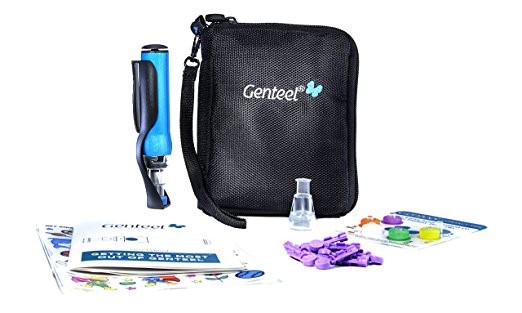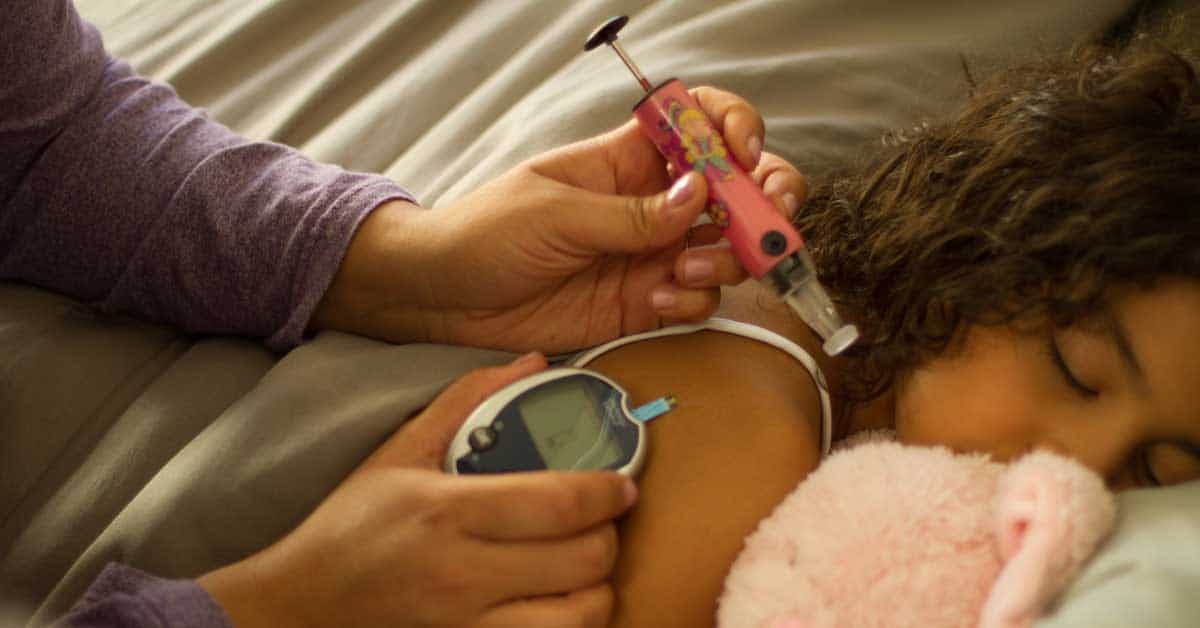
A thin needle pierces the skin, over and over, drawing drop of blood after drop of blood. While this may sound like the beginning of a horror film, it’s actually the daily life of those that live with diabetes. One of the biggest concerns for many parents of young children and even adults with diabetes is the pain factor that comes with checking their blood sugar frequently throughout the day.
I’ll be honest with you; I first came across the Genteel device at Children with Diabetes: Friends for Life in Florida in 2015. I was very interested in it because at the time I had a four-year-old T1D and an eleven-year-old T1D who have honestly endured enough in my opinion.
Unfortunately, the cost of the device kind of threw me back at $129 each, this wouldn’t necessarily be affordable up front for our family. Over time we decided to give it a try.
I advise reading the following:
- Contour Next ONE Meter Review
- Top 10 Popular Blood Glucose Meters Put to the Test
- If I Have Diabetes, Will I Have to Stop Eating Sugar?
- 28 Experts Share Their Advice: How To Better Cope With Diabetes
- Experts Share How You Can Keep Moving With A Busy Schedule
- Sensitive Feet and Diabetes: Why My Feet Hurt?
Skepticism
I did approach using Genteel with my kids with some skepticism, although I was definitely intrigued at the idea and secretly hoped it was wonderful. I was taught if something sounds too good to be true, well it usually is. This time I’m happy to report my skepticism was put to rest.
The Test
There is a learning curve you will want to get used to when you are first putting the device together and learning how to use it in the right way. It took a while for me to remember to press the activation button for a long enough time then to remember to release it before it comes in contact with the skin. I had to remind myself that my fingers needed to stay off of the push cap. But eventually we got comfortable in using the Genteel device. After some trial and error my kids claimed that Genteel was virtually pain free for them.
So Does It Fulfill the Promises?
I’m happy to report that with our experience of it, it does. We are able to test on alternative sites like arms, shoulders, fingers, above their knee and other sites with really great success. The difference between Genteel and regular devices is that regular devices use a dial feature to change the depth of the lancing. Genteel uses contact tips which you need to install onto the nozzle. It can be a bit tricky and frustrating as well as time consuming when you have to change the tips back and forth. You will want to work through them in the beginning to find out which tip is best for your needs.
We discovered that the blue tip was wonderful when used for fingertips, however it wasn’t necessarily the best for alternative sites, it just wasn’t strong enough. Genteel is designed to work with squared shaft lancets. There is a list on the website that will go through which brand works best and what ones are compatible.
One downside that I didn’t really care for is that Genteel doesn’t have a system in place for ejecting the lancets when you use them. You have to pull them out manually. You will want to make sure you rinse the nozzle and the contact tips out because you cannot keep blood from smearing on the inside of them. Many people have complained of the size of the Genteel system as it makes it difficult to carry along with supplies. I have found that isn’t the case with us, yet because the kids both still take diabetes bags along with them wherever they go and they can just keep them nicely in there.

It does make night time checking much easier and less painful. I don’t have to fight with them to pull their hands out just to test, because with Genteel you can use the alternative sites without any pain.
Further reading:
Wrap-Up
If you have been searching for a less painful way of testing yourself or your kids, you may want to give the Genteel a try. The price tag that comes along with it may be a little higher than most lancing device, but in the end it’s a wonderful investment all around. If you have any questions about the device that I didn’t cover, please feel free to comment below and I’ll answer them the best I can.
TheDiabetesCouncil Article | Reviewed by Dr. Jerry Ramos MD on May 20, 2020




